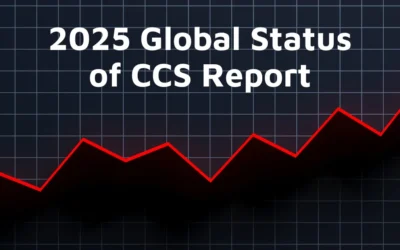This is not just a technical debate. It’s a reckoning for corporate buyers, sustainability officers, and anyone tasked with translating climate ambition into bottom-line results. The answer, it turns out, is more nuanced—and more urgent—than the hype suggests.
Anna Jacobs
The Carbon Capture Spectrum: From Chimneys to the Sky
At its core, carbon capture is about intercepting CO2 before it can warm the planet. CCS does this at the source—think power plants, cement kilns, steel mills – where CO2 pours out in concentrated streams. The technology is mature, the chemistry well-understood, and the economics, while not trivial, are at least within reach for many industries.
DAC, by contrast, is the moonshot. Instead of targeting smokestacks, it tries to vacuum CO2 straight from the air, where it’s barely a trace gas – just 0.04% of the atmosphere. The engineering challenge is immense: imagine trying to catch a single drop of ink in an Olympic-sized swimming pool. That’s the scale of dilution DAC must overcome.
So why bother? Because DAC, in theory, can mop up legacy emissions and help us reach true “net zero” – not just slowing the flow of new carbon, but actually drawing down what’s already out there.
The Hidden Costs of Mechanical Direct Air Capture
The vision is seductive: rows of futuristic machines, fans whirring, quietly erasing humanity’s carbon debt. But the reality is messier.
First, there’s the energy bill. DAC plants must move colossal volumes of air to capture even a modest amount of CO2. The Climeworks Mammoth facility in Iceland, for example, is one of the world’s largest, yet it captures just 36,000 tons of CO2 per year—a rounding error compared to global emissions. And while Iceland’s grid is famously renewable, most places aren’t so lucky. Powering DAC at scale could cannibalize clean electricity that would otherwise decarbonize the grid.
Then there’s the matter of materials. DAC relies on advanced chemical sorbents—amines, rare earth metals—that degrade over time and need replacement. Manufacturing and disposing of these materials adds its own environmental toll. Water use is another Achilles’ heel; many DAC processes are thirsty, making them a tough sell in drought-prone regions.
And the price tag? Despite billions in R&D, DAC remains a luxury solution. Today’s costs hover between $600 and $1,200 per ton of CO2 removed, according to the International Energy Agency. Even with optimistic scaling, few expect prices to fall below $100 per ton this decade.
There’s also a less-publicized wrinkle: much of the CO2 captured by DAC is injected into depleted oil wells for enhanced oil recovery—a process that, ironically, helps extract more fossil fuels. For companies seeking true climate integrity, this is a reputational minefield.
Finally, there’s the infrastructure problem. Captured CO2 must be compressed, piped, and buried deep underground—often in places where public opposition is fierce and regulatory frameworks are patchy at best.
CCS: Reliable, But Limited
Traditional CCS is a workhorse, not a headline-grabber. It’s proven at scale and can slash emissions from some of the world’s dirtiest industries. The economics are far friendlier than DAC: $50 to $100 per ton is typical, depending on the facility and region.
But CCS has its limits. It only works where there are big, stationary sources of CO2 and suitable geology for storage. It can’t clean up legacy emissions already in the air. And while it prevents new carbon from entering the atmosphere, it doesn’t create negative emissions—the gold standard for net-zero strategies.
Public perception is another hurdle. Communities are wary of living atop CO2 storage sites, and any leak—real or rumored—can stall projects for years.
Biochar: The Ground-Up Alternative
Enter biochar, and with it, Dynamic Carbon Credits. Instead of chasing carbon with machines or pipes, this approach harnesses nature’s own technology: biosynthesis. Fast-growing plants pull CO2 from the air at astonishing rates—20 to 40 times faster than conventional forests. Once harvested, the biomass is transformed into biochar through pyrolysis, a process that locks carbon into a stable form that resists decomposition for centuries.
But the story doesn’t end there. When biochar is added to soil, it does double duty: sequestering carbon and supercharging soil health. Farmers see better water retention, improved crop yields, and more resilient fields. Communities benefit from restored land and new green jobs. And because biochar systems can be deployed almost anywhere—from farms to industrial sites to urban compost facilities—there’s no need for billion-dollar mega-plants or controversial pipelines.
The process is energy-smart, too. Pyrolysis can be energy-neutral or even energy-positive, using the heat generated from the biomass itself.
The Value Equation: Why Quality Matters in Carbon Credits
Let’s talk numbers—the language of every procurement officer and CFO. On the surface, some carbon credits may appear attractively cheap. But in the world of carbon markets, you truly get what you pay for.
Many of the lowest-priced credits flooding the market are based on temporary avoidance or forestry projects with questionable permanence. These credits often promise more than they deliver, with carbon that’s not truly locked away and little transparency about long-term impact. Regulators and sophisticated corporate buyers are increasingly calling out this kind of greenwashing, demanding high-integrity removals that offer real, lasting climate benefit.
Compare this to engineered removals like Direct Air Capture (DAC), which, while often costing hundreds or even thousands of dollars per ton, remain unproven at scale and are still years away from delivering the permanence and co-benefits that business leaders require.
Dynamic Carbon Credits’ biochar solution stands apart. Our credits are rooted in science and verified for durability—locking carbon away for centuries, not just decades. But the value doesn’t stop at carbon. Each credit is an investment in healthier soils, improved crop yields, water security, and community resilience—benefits that ripple through your supply chain and create measurable operational and reputational gains.
As voluntary and compliance markets evolve, the trend is clear: buyers are moving away from low-cost, low-durability credits and converging on high-integrity removals. The future belongs to solutions that deliver transparent, auditable, and permanent impact. With Dynamic Carbon Credits, you’re not just avoiding greenwashing—you’re leading the market in credible, defensible climate action that stands up to stakeholder and regulatory scrutiny.
For Fortune 500 buyers, the real question isn’t “What’s the cheapest credit?” but “What delivers measurable, reportable, and lasting value?” With Dynamic Carbon Credits, your company is positioned at the forefront of credible climate action—meeting stakeholder expectations and future-proofing your ESG commitments.
Methods of Capturing Carbon
Beyond Compliance: ESG Leadership and Real-World Impact
The regulatory landscape is shifting fast. SEC climate risk rules, the EU’s CSRD, and voluntary frameworks like TCFD and SBTi are raising the bar for what counts as credible carbon removal. Fortune 500 companies can no longer rely on opaque or low-durability credits to meet their net-zero commitments.
Dynamic Carbon Credits’ plant-based solution is fully auditable, blockchain-verified (via Northern Trust), and aligns with leading standards for voluntary carbon markets. Biochar credits can be applied across direct operations, purchased energy, and supply chain emissions—delivering measurable impact where it matters most.
The co-benefits are not just a nice-to-have. Improved soils, local jobs, ecosystem restoration – these are stories that resonate with investors, customers, and communities. Early adopters are signaling innovation and leadership in sustainability, differentiating themselves in a crowded market.
A Fortune 500 Case Study: Turning Ambition into Action
Consider a global consumer goods company facing mounting pressure to decarbonize its supply chain. Traditional carbon credits were expensive and lacked transparency; DAC options were prohibitively costly and difficult to scale.
By partnering with Dynamic Carbon Credits to deploy biochar projects across agricultural suppliers in North America and Asia, the company achieved remarkable results in just 18 months. Over 100,000 tons of CO2 were permanently removed from the atmosphere. Crop yields improved by up to 12% across participating farms. The company secured third-party verified carbon credits at less than half the cost of DAC alternatives. And as stories of soil restoration and community impact filled their annual ESG report, stakeholder engagement soared.
The outcome? Net-zero commitments met ahead of schedule—and a brand reputation strengthened by real-world impact.
The Bottom Line: What’s Right for Your Business?
Direct air capture is a technological marvel—but it’s expensive, energy-hungry, and slow to scale. Traditional carbon capture is reliable but limited in scope. Biochar, as delivered by Dynamic Carbon Credits, offers a third way: affordable, scalable, and packed with co-benefits for agriculture, communities, and ecosystems.
In a world where every ton of carbon—and every dollar—counts, choosing the right carbon management strategy is both a fiduciary and ethical responsibility.
Ready to Transform Your Carbon Strategy?
The era of expensive, high-risk carbon removal is over. Dynamic Carbon Credits delivers a proven, cost-effective solution that not only meets your net-zero commitments but also amplifies your ESG story with tangible co-benefits for agriculture, communities, and ecosystems.
Take the next step:
Book a private consultation with our sustainability strategists to map out a tailored carbon credit portfolio for your organization. Request a custom impact report showing how Dynamic Carbon Credits can reduce your Scope 1, 2, and 3 emissions – while delivering measurable value to your stakeholders. Download our executive white-paper for a detailed breakdown of cost savings, regulatory compliance, and market leadership opportunities.
Contact us today to schedule your strategy session.
Dynamic Carbon Credits: Where climate action meets business value.
Take Action Today!
Ready to move forward with your corporate sustainability strategy? Reach out to Dynamic Carbon Credits for a full consultation on how we can help you achieve tangible carbon reduction goals and propel your company further down the path to net-zero.






